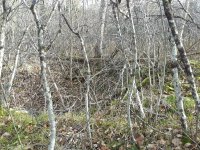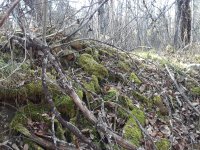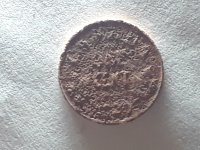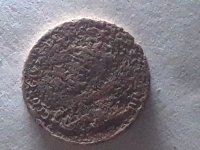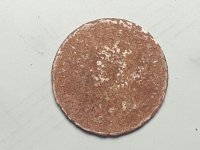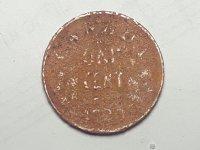Almy
Bronze Member
I have been hunting this foundation in the forest for many years. Notable finds have been rosehead nails, 1824 Nova Scotia penny token, 1861 New Brunswick large cent and a watch case from the 1880s. It's such a nice spot that I enjoy being there even though the finds are scattered and few. Our family bought the site and surrounding land a couple of years ago, so I have that special interest in it.
On my last hunt there a couple of days ago, I found a few pieces from a sickle bar mowing machine and a couple of bottle caps. As I was leaving the site, I kept the detector going and suddenly there was a strong signal. The little fellow pictured was about 3 inches down in the black soil. As soon as I cleaned it a bit, I could see the ONE CENT so I knew it was an early Canadian small cent. From what I could see, it looked like a 1920 date. Subsequent cleaning confirmed that. That year was the first year of minting small cents in Canada. It had been large cents before that. This cent was probably dropped by the occupiers of the homesite, who apparently were there from the 1800s to the early 1900s.
The pictures of the site show the cellar hole, which was dug out many years ago with an excavator, and the fireplace bricks which the excavator placed in a pile beside the hole. The poorer two coin pictures were taken with oblique lighting after the corrosion had been removed using a lemon juice soak. I then used some sandpaper to hit the high places and took the second two pictures.
On my last hunt there a couple of days ago, I found a few pieces from a sickle bar mowing machine and a couple of bottle caps. As I was leaving the site, I kept the detector going and suddenly there was a strong signal. The little fellow pictured was about 3 inches down in the black soil. As soon as I cleaned it a bit, I could see the ONE CENT so I knew it was an early Canadian small cent. From what I could see, it looked like a 1920 date. Subsequent cleaning confirmed that. That year was the first year of minting small cents in Canada. It had been large cents before that. This cent was probably dropped by the occupiers of the homesite, who apparently were there from the 1800s to the early 1900s.
The pictures of the site show the cellar hole, which was dug out many years ago with an excavator, and the fireplace bricks which the excavator placed in a pile beside the hole. The poorer two coin pictures were taken with oblique lighting after the corrosion had been removed using a lemon juice soak. I then used some sandpaper to hit the high places and took the second two pictures.
Attachments
Upvote
18


